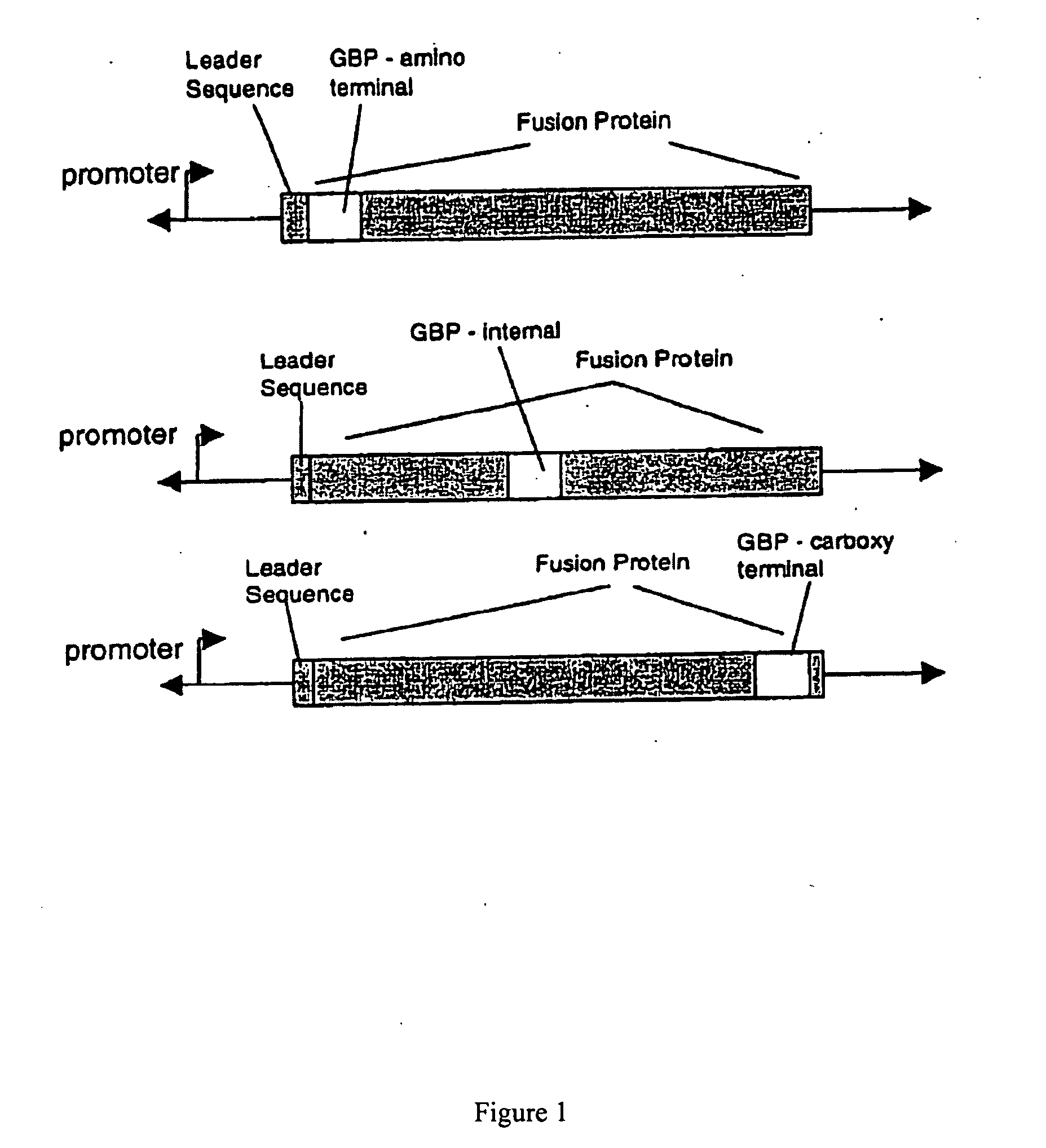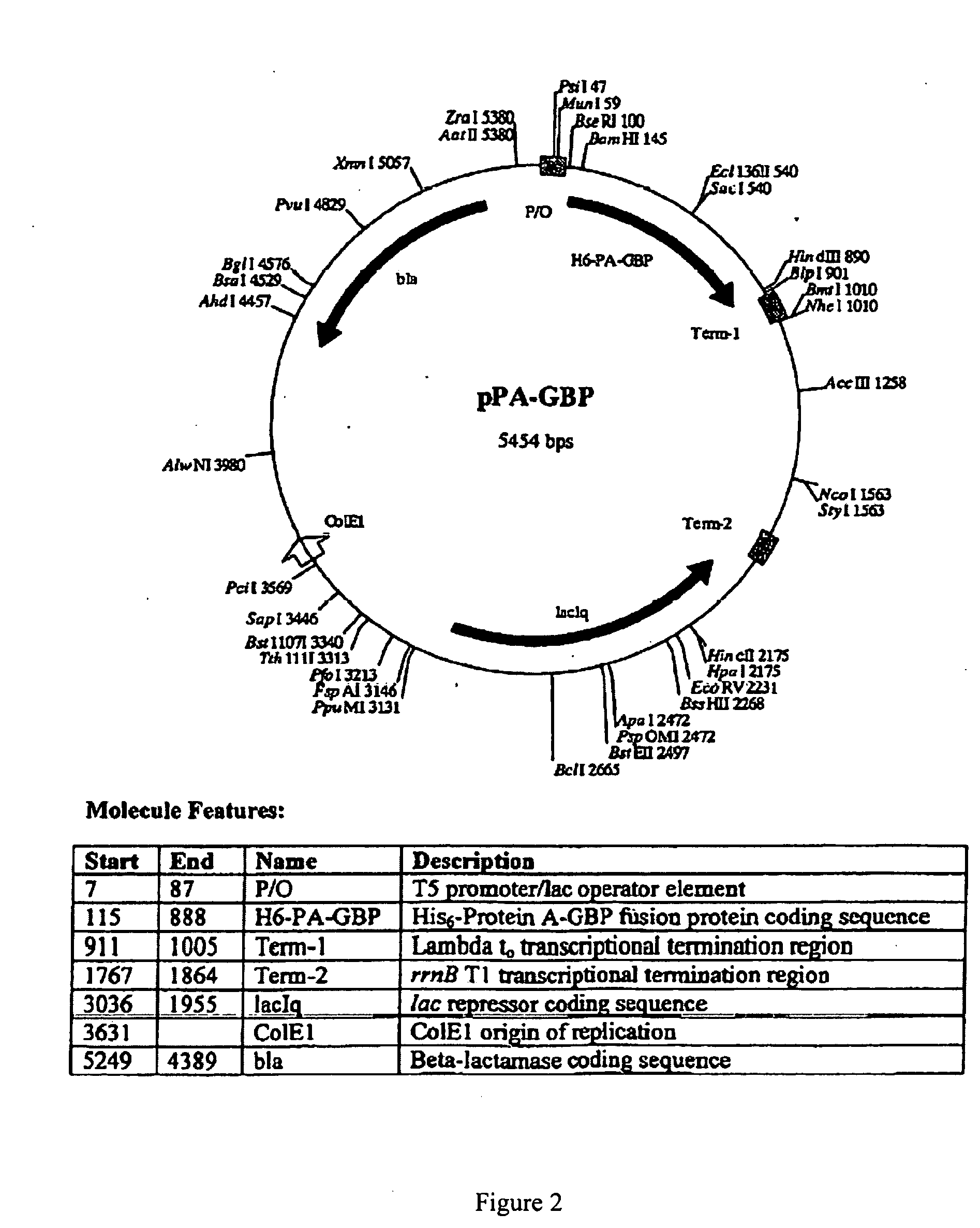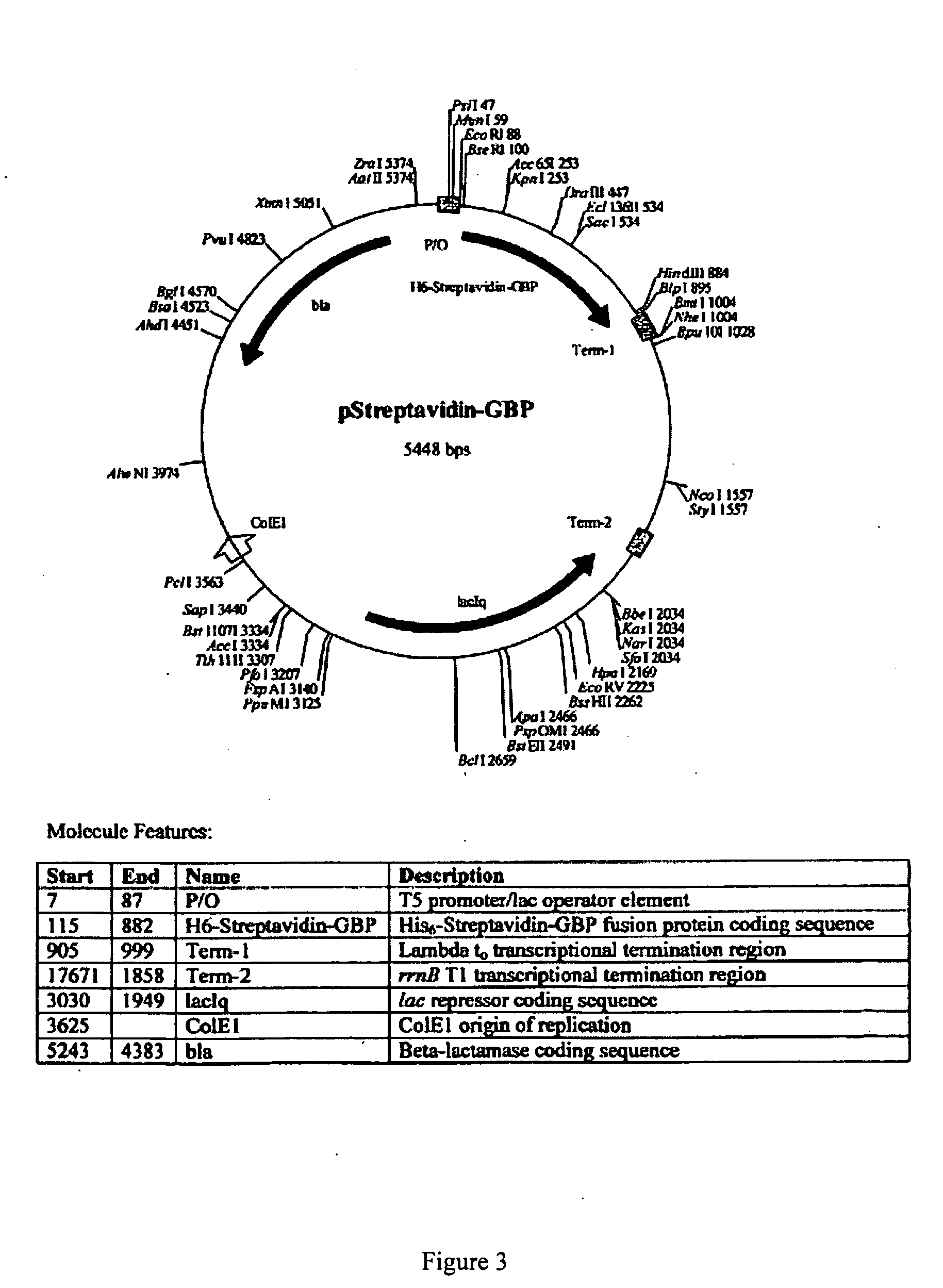Recombinant fusion proteins with high affinity binding to gold and applications thereof
a fusion protein and high affinity technology, applied in the field of fusion proteins, can solve the problems of limited ability to prepare functional surfaces, severely impede the development of novel applications in all fields utilizing gold, and not easy to adsorb, so as to reduce the number of potential testing applications, reduce the number of surface interactions, and ensure the effect of stability
- Summary
- Abstract
- Description
- Claims
- Application Information
AI Technical Summary
Benefits of technology
Problems solved by technology
Method used
Image
Examples
example 1
Plasmid Design for Expression of GBP Fusion Proteins
[0191] Recombinant fusion proteins are produced by expression of plasmid constructs encoding the protein of interest fused with the GBP. The plasmid constructs include a selectable marker including but not limited to ampicillin resistance, kanamycin resistance, neomycin resistance or other selectable markers. Transcription of the GBP fusion protein is driven by a regulatable promoter specific for expression in bacteria, yeast, insect cells or mammalian cells. The construct includes a leader sequence for expression in the periplasmic space, for secretion in the media, or for expression in inclusion bodies in bacterial cells, or for secretion in yeast or mammalian cells. Plasmid constructs include multiple cloning sites for insertion of protein sequences in frame with respect to the GBP polypeptide. The GBP sequence can be inserted at the amino-terminal or C-terminal end of fusion partners or inserted within the coding sequence of t...
example 2
Expression of GBP-Fusion Proteins
[0206] The GBP-fusion constructs for all examples were transfected into NovaBlue cells (Novagen). For expression, an overnight culture of the transformants grown in LB broth+ampicillin at 37° C. was diluted into fresh media and grown with vigorous shaking till the OD measured at 600 nm was between of 0.3-0.4. Isopropyl .beta.-D-thio-galactopyranoside was added to a final concentration of 4 mM and the incubation was continued for another 4 hours. The cells were collected by centrifugation, washed once with 150 mM KCl and frozen.
[0207] In preliminary experiments, induced and non-induced cells were first extracted in B-Per (Pierce), a gentle buffer for lysis of bacteria to recover soluble proteins. The extract was centrifuged to clarify the solution and the pellet was extracted directly in SDS-PAGE sample buffer to recover insoluble proteins. All samples were analyzed by SDS-PAGE and staining with a colloidal form of coomasie blue (Invitrogen). The re...
example 3
Purification of GBP-Fusion Proteins
[0209] Larger cultures were grown to produce sufficient fusion proteins for purification and characterization. To extract proteins under “native” conditions for subsequent purification, the bacteria were resuspended in 50 mM sodium phosphate buffer, pH 8.0, containing 0.5M sodium chloride and 10 mM imidazole to a final density approximately 20 times greater than that of the original cultures. Cells on ice were lysed by sonication at medium power and interval setting of 50% to give an intermittent pulse for 30 seconds. This was repeated for 6 cycles with one-minute rest on ice between cycles. Following each cycle, the optical density at 600 nm was recorded to assess cell lyses. The sonicated suspension was centrifuged 5,000×g for 10 min to remove cell debris and insoluble proteins from the soluble fraction. The resulting pellet was extracted in a “denaturing” solution of 20 mM sodium phosphate buffer, pH 7.8, containing 6M guanidine HCl (Gu-HCl) an...
PUM
| Property | Measurement | Unit |
|---|---|---|
| refractive index | aaaaa | aaaaa |
| RI | aaaaa | aaaaa |
| dissociation constants | aaaaa | aaaaa |
Abstract
Description
Claims
Application Information
 Login to View More
Login to View More - R&D
- Intellectual Property
- Life Sciences
- Materials
- Tech Scout
- Unparalleled Data Quality
- Higher Quality Content
- 60% Fewer Hallucinations
Browse by: Latest US Patents, China's latest patents, Technical Efficacy Thesaurus, Application Domain, Technology Topic, Popular Technical Reports.
© 2025 PatSnap. All rights reserved.Legal|Privacy policy|Modern Slavery Act Transparency Statement|Sitemap|About US| Contact US: help@patsnap.com



